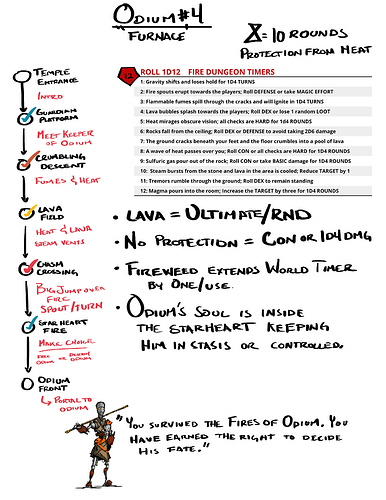Hey @glocke, great question. To frame my response, it helps to know that I use the “amusement park” method for my campaigns. Players can go anywhere within the park, but once they hop on a ride, that ride is on rails for a bit. When my players choose a ride (a hook, arc, or thread in the story), then I generally prep at least 3 rooms for that ride, which is approximately 3 hours of play. If you’re running an hour per room, I think you’re right in the sweet spot, and so I don’t think you have to adjust your scenes.
If three rooms is about three hours, then we conclude the session with that ride ended, and in between sessions, players can tell me where they want to go next, depending on the clues/hooks on the prior ride. Or, I might foist events on them (there’s trouble over at the log flume), and then next session we’re back on track for another 3 rooms/3 hours of play.
However, it’s possible a ride/story arc might be 5 or 6 rooms, depending on the scenes I have imagined. If that is the case, then at the end of 3 hours, I’ll roll the session end die, and give players 1d4 rounds to finish off the night (no matter where we are), with the last round always “the final frame in the comic,” where players describe their parting freeze frame. I am also always on the hunt for a natural cliffhanger in the story around the 3 hour mark. If a player drops, goes off a cliff, walks into a room with a dragon rising to full height, or some other memorable moment, I’ll just call the session end right then and there. There’s nothing like leaving everyone wanting just a little bit more. So, don’t be afraid to end your session where it’s at.
I’m also a big fan of the Runehammer room method, so I am always planning my scenes in rooms of 3, alotting about an hour per room. In that vein, if you end up with 5 rooms, you might just bump it up to 6 and spread across two sessions; or you might be a savage in terms of self-editing and reduce down to 3 (we only need the entrance to Moria; the troll attack; and the balrog fight, and we can omit the hallway); or you might run with the first 3 rooms, see what your players give you during the night, then adjust from there for next session (in this vein, it’s nice to have a little extra in the notebook for next week and a jump on the prep); or you might just run 3 rooms one session and only 2 rooms the next session and just call a session early, especially if they just finished the mini-boss or climax (“guys, that’s all I have planned for this arc; where are we headed next week?”). Sometimes those short sessions give you a chance to do a mini tribunal and check in with your players to see if everyone is still having fun.
I think by now you’re seeing that I follow a regimen of 3 hours of content a session, roughly, and I don’t feel pressure to go beyond that on the clock, wherever the story happens to be. I find that inattention starts to creep in after 3 hours, and folks begin to get antsy. So, there’s nothing wrong with calling it at that point or even ending early if you don’t have anything else planned. There’s no need to put undue pressure on yourself. Especially if players hit a big climax, just end it there, let everyone regroup in chat, and pick back up the following week. Also, by now, you’re probably picking up the fact that I am more concerned about the clock and less concerned about the planned content. I can always work ahead a couple of rooms.
Sometimes you might have a single room that takes all three hours. That’s awesome if you end up on one giant battle map for the night. Or maybe in 3 hours, players knock out 4 rooms. That’s awesome if they do. Then, I just regroup, figure out where we are on the ride and within the amusement park and then adjust from there.
A tough scenario might be if next session is the one room climax, and then you know you’ll need a couple rooms beyond that to round out the next night of play. In that situation, I might just chat with my players, “Hey, if you defeat the dragon, are you headed to follow up at the log flume or will you be headed off to the teacups?” I let them know honestly that I’ll need a consensus, so I can prep for next session. Or, I’ll dig deep and think of one or two rooms that logically follow the dragon fight. “Oh, you thought that was the climax? It’s actually escaping the dragon’s caves as the room collapses and the ropers try to pull you in!”
In any event, I think if you follow a similar method and then focus on the session end time as your polar star, you’ll find you can adjust the content you have planned to fit with just a little bit of figuring during the in-between times. And who knows, with some killer final frames, cliffhangers, and planned climaxes, you might just up the excitement of your sessions as a byproduct. In any event, those are my most cogent thoughts on this great question. Hit me up on discord if you want to discuss at length.


 !
!

